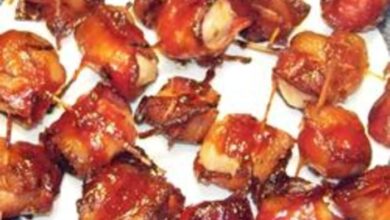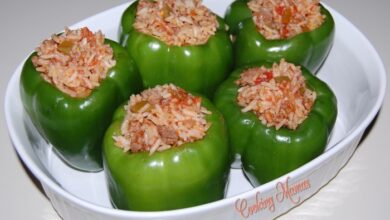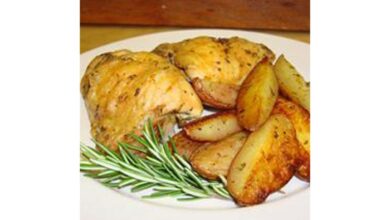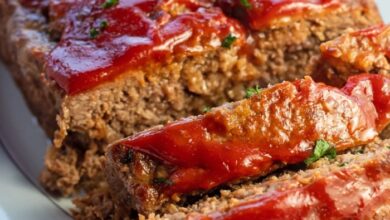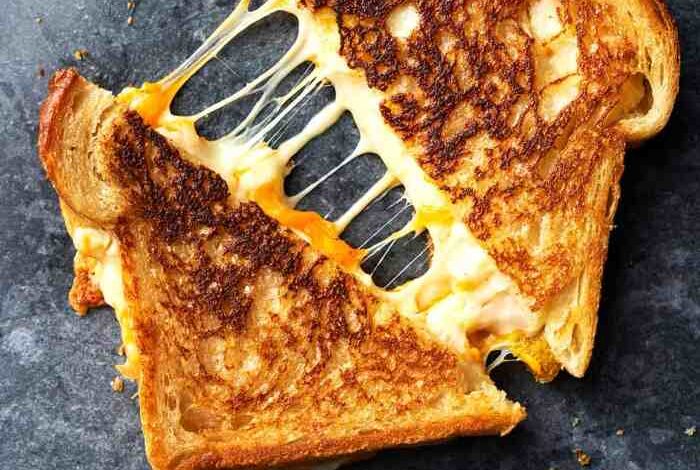
Perfectly Crispy Grilled Cheese: The Ultimate Guide
Perfectly crispy grilled cheese, oh the golden, gooey goodness! It’s a classic comfort food that can be elevated to a whole new level with a little bit of science and technique. From understanding the chemical reactions that create that irresistible crust to mastering the art of cheese selection and cooking techniques, we’re diving deep into the world of crispy grilled cheese perfection.
Whether you’re a seasoned grilled cheese aficionado or a newbie looking to level up your culinary game, this guide has everything you need to transform your next grilled cheese into a crispy masterpiece. We’ll explore the secrets behind achieving that perfect crunch, delve into the science of browning and heat transfer, and share tips and tricks for creating the most satisfyingly crispy grilled cheese experience.
The Science of Crispy Grilled Cheese: Perfectly Crispy Grilled Cheese
The perfect grilled cheese isn’t just about melted cheese and soft bread; it’s about achieving that gloriously crispy crust that adds a delightful crunch and elevates the experience to a whole new level. Understanding the science behind this crispy perfection can help us unlock the secrets to crafting the ultimate grilled cheese.
The Role of Heat Transfer and Browning
The key to achieving a crispy crust lies in the interplay between heat transfer and browning reactions. As the pan heats up, it transfers heat to the bread, causing its surface molecules to vibrate faster. This increased molecular motion leads to the breakdown of starch molecules within the bread, resulting in the release of water and the formation of dextrins.
These dextrins, along with sugars present in the bread, undergo a complex series of chemical reactions known as the Maillard reaction. This reaction, responsible for the browning of bread and other foods, involves the interaction of amino acids and sugars, leading to the formation of hundreds of different flavor compounds and pigments.
Factors Influencing Crispness
Several factors contribute to the level of crispness in a grilled cheese sandwich.
Bread Type
The type of bread used plays a crucial role in determining the final crispness. Breads with a higher starch content, such as white bread, tend to produce a crispier crust compared to breads with a higher moisture content, like sourdough.
This is because the starch molecules in white bread break down more readily, leading to the formation of more dextrins and a crispier crust.
Cheese Choice
The type of cheese used can also influence the crispness of the grilled cheese. Cheeses with a lower moisture content, such as cheddar or Gruyère, tend to melt more evenly and produce a crispier crust compared to cheeses with a higher moisture content, like mozzarella or brie.
This is because the lower moisture content allows the cheese to brown more readily, contributing to the overall crispness.
Cooking Technique
The cooking technique employed significantly impacts the level of crispness. Using a hot pan allows for faster heat transfer, promoting the browning reactions and leading to a crispier crust. Additionally, pressing the sandwich with a spatula or using a weight during cooking helps to evenly distribute heat and promote browning on both sides.
Bread Selection for Crispy Grilled Cheese
The foundation of a perfect grilled cheese is the bread. It’s not just about holding the cheese and butter together; the bread plays a crucial role in achieving that coveted crispy exterior. Different bread types offer unique textures and crust potential, directly impacting the overall crunchiness of your grilled cheese.
There’s something so satisfying about a perfectly crispy grilled cheese, the way the cheese melts and browns, creating those irresistible golden edges. And while I love the classic combination of cheddar and white bread, I recently discovered a new way to elevate my grilled cheese game – by adding a touch of Japanese flavor.
I’ve been experimenting with incorporating soy eggs shoyu tamago into my sandwiches, the savory, umami-rich flavor of the soy-marinated eggs adds a whole new dimension to the classic comfort food. The creamy yolk, infused with the depth of the soy sauce, pairs beautifully with the melted cheese and crispy bread, creating a truly unforgettable grilled cheese experience.
Bread Types and Their Suitability for Crispy Grilled Cheese
Choosing the right bread can make or break your grilled cheese experience. Here’s a breakdown of popular bread options and their suitability for achieving a crispy crust:
| Bread Type | Texture | Crust Potential | Recommendation |
|---|---|---|---|
| White Bread | Soft, fluffy | High | Great for classic grilled cheese, readily available, and achieves a satisfying crunch. |
| Sourdough Bread | Dense, tangy | Very high | Offers a robust flavor and exceptional crispness due to its high acidity. |
| Rye Bread | Dense, slightly sweet | Moderate | Provides a unique flavor and a good level of crispness, but might not be as crispy as white or sourdough. |
| Wheat Bread | Slightly denser than white bread | Moderate | Offers a heartier texture and a decent level of crispness, but may not achieve the same level as white or sourdough. |
| Brioche Bread | Rich, buttery, and soft | Low | Not ideal for crispness, but offers a luxurious and indulgent experience. |
| Texas Toast | Thick, buttery, and slightly sweet | High | Offers a large surface area for maximum crispness, often pre-toasted for extra crunch. |
Tips for Choosing Bread for Desired Crispness
* High Crispness:Opt for breads with a high crust potential, like white or sourdough. These breads have a higher starch content, which contributes to browning and crispness.
Moderate Crispness
Wheat or rye bread offer a good balance of texture and crispness. They are denser than white bread, resulting in a less intense crunch.
Low Crispness
There’s something so satisfying about a perfectly crispy grilled cheese, the kind where the cheese melts into a gooey pool and the bread gets that golden-brown crunch. But sometimes, you crave something a little different, like the delightful squeaky texture of gluten free fried cheese curds.
That same crispy exterior, but with a soft, tangy center, makes them a fun and satisfying alternative to the classic grilled cheese.
Brioche, while delicious, is not ideal for achieving a crispy crust. Its soft, buttery texture may not brown as readily.
Experiment
Don’t be afraid to experiment with different bread types to find your perfect match.
Freshness
There’s something so satisfying about a perfectly crispy grilled cheese, the way the cheese melts and browns, creating that irresistible crunch. And while a grilled cheese is a classic comfort food, sometimes you crave something lighter and warmer. That’s where a keto instant pot soup low carb comes in, a delicious and healthy alternative that’s perfect for a cozy night in.
But don’t worry, you can always save room for another slice of that crispy grilled cheese goodness!
Always use fresh bread for the best results. Stale bread is less likely to achieve a crisp exterior.
Mastering the Art of Cheese Selection
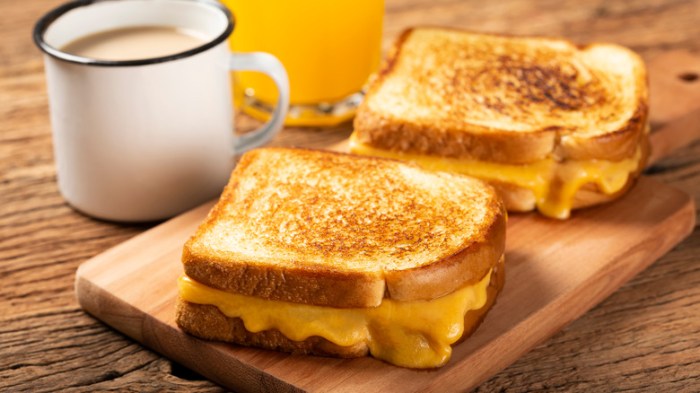
The cheese you choose is the heart and soul of a crispy grilled cheese. It’s not just about flavor, but about its ability to melt, stretch, and crisp up for the perfect bite.
Cheese Melting Properties and Fat Content
The melting properties of cheese are crucial for achieving a crispy grilled cheese. Cheeses that melt smoothly and evenly create a cohesive layer that can crisp up nicely. Fat content plays a significant role in this process. Higher fat cheeses, like cheddar or Gruyère, melt more readily and create a rich, creamy texture that promotes browning and crispness.
Suitable Cheese Types for Crispy Grilled Cheese
Here are some cheese types known for their melting behavior and potential for crispness:
- Cheddar:A classic choice for grilled cheese, cheddar offers a sharp flavor and melts smoothly, creating a nice crust.
- Gruyère:This Swiss cheese is known for its nutty flavor and its ability to melt evenly, forming a stretchy, slightly browned crust.
- Monterey Jack:A mild, buttery cheese, Monterey Jack melts smoothly and browns well, making it a good choice for a crispy grilled cheese.
- Havarti:This semi-soft cheese melts beautifully and has a slightly sweet flavor. It’s a good option for a slightly less sharp grilled cheese.
- Gouda:This Dutch cheese has a mild, slightly sweet flavor and melts well, creating a creamy texture that crisps up nicely.
Techniques for Achieving Crispy Perfection
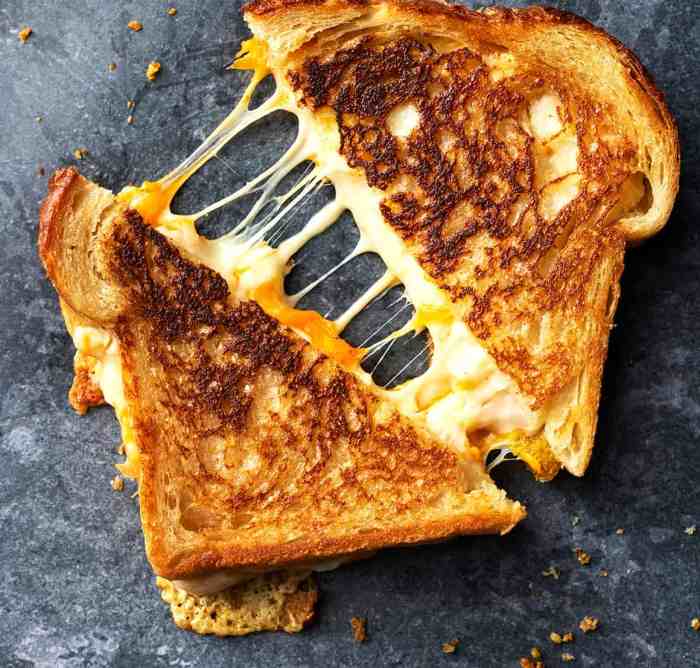
The quest for the perfect crispy grilled cheese transcends mere culinary ambition; it’s a pursuit of textural nirvana. Achieving that golden-brown, shatteringly crisp exterior while maintaining a gooey, melted interior is a delicate dance of heat, pressure, and timing.
Let’s delve into the techniques that elevate your grilled cheese from ordinary to extraordinary.
Pan-Frying, Perfectly crispy grilled cheese
Pan-frying offers a straightforward approach to achieving crispy grilled cheese. The direct heat of the pan allows for quick browning, while the flat surface ensures even cooking. However, achieving perfect crispness requires careful attention to heat control and timing.
- Moderate Heat:A medium-high heat setting is ideal. Too high, and the bread will burn before the cheese melts; too low, and the cheese will melt before the bread browns.
- Butter or Oil:A thin layer of butter or oil prevents sticking and adds flavor. Avoid overcrowding the pan, as this will lower the temperature and prevent even browning.
- Weight:A heavy pan distributes heat more evenly and helps create a crispier crust. Consider using a cast iron skillet for optimal results.
- Flip Carefully:Once the bottom is golden brown, carefully flip the sandwich using a spatula. Avoid pressing down too hard, as this can squish the cheese.
- High Heat Finish:For an extra crispy crust, increase the heat slightly for the last minute of cooking. This will encourage browning without burning the cheese.
Grilling
Grilling adds a smoky flavor and distinct grill marks to your grilled cheese, enhancing its visual appeal. The indirect heat of the grill allows for even cooking, while the grates provide a textured surface for crispy edges. However, achieving consistent crispness requires careful temperature management and attention to timing.
- Medium Heat:Preheating the grill to medium heat ensures even browning without burning the bread. Avoid using high heat, as this can lead to uneven cooking and burnt edges.
- Oil the Grates:Brush the grill grates with oil to prevent sticking and enhance browning. Avoid using too much oil, as this can create excessive smoke.
- Grill Marks:Place the sandwich directly on the grates to create those iconic grill marks. Flip the sandwich halfway through cooking for even browning.
- Lid Closed:Close the grill lid to trap heat and promote even cooking. This also helps to melt the cheese and create a more uniformly cooked sandwich.
- High Heat Finish:For a final burst of crispness, briefly increase the heat for the last minute of cooking. This will help to brown the edges without burning the cheese.
Panini Press
The panini press offers a convenient and efficient way to achieve crispy grilled cheese. The combination of heat and pressure ensures even cooking and a uniformly crispy crust. However, the lack of visual appeal and the potential for uneven cooking are drawbacks to consider.
- Preheating:Preheat the panini press according to the manufacturer’s instructions. A hot press is crucial for achieving a crispy crust.
- Butter or Oil:Brush the press plates with butter or oil to prevent sticking and enhance browning. Avoid using too much, as this can create excessive smoke.
- Even Pressure:Close the press firmly to ensure even pressure throughout the cooking process. This will help to create a uniformly crispy crust and melt the cheese evenly.
- Timing:Adjust the cooking time based on the thickness of the sandwich and the desired level of crispness. Start with a shorter time and adjust as needed.
- Avoid Overcooking:Overcooking can lead to a dry, hard crust and burnt cheese. Keep a close eye on the sandwich and remove it from the press as soon as it reaches the desired level of crispness.
Enhancing the Crispy Grilled Cheese Experience
A perfectly crispy grilled cheese is a culinary masterpiece, but why stop there? Let’s explore ways to elevate this classic comfort food to new heights of flavor and texture.
Adding Flavor and Texture
Beyond the cheese and bread, a world of possibilities awaits to enhance your crispy grilled cheese. A sprinkle of herbs, a dash of spice, or a drizzle of sauce can transform your sandwich into a culinary adventure.
- Herbs:Fresh herbs like basil, oregano, thyme, and rosemary add a burst of aromatic flavor. Consider adding a few sprigs to the pan while grilling or incorporating them into a spread for the bread.
- Spices:A pinch of paprika, chili powder, or cayenne pepper can add a subtle heat to your grilled cheese. Experiment with different spice blends to find your favorite combination.
- Sauces:Drizzling a bit of your favorite sauce, such as sriracha, honey mustard, or BBQ sauce, can add a tangy or sweet element to the sandwich.
- Other Add-ins:Consider incorporating ingredients like caramelized onions, roasted peppers, or even a layer of pesto for an extra layer of flavor and texture.
Recipe: Spicy Sriracha Grilled Cheese with Caramelized Onions
This recipe combines the smoky sweetness of caramelized onions with the fiery kick of sriracha for a unique and flavorful twist on the classic grilled cheese. Ingredients:* 2 slices of sourdough bread
- 2 slices of cheddar cheese
- 1/4 cup thinly sliced onions
- 1 tablespoon butter
- 1 tablespoon sriracha sauce
Instructions:
- In a skillet over medium heat, melt butter. Add onions and cook, stirring occasionally, until softened and caramelized, about 10 minutes.
- Spread sriracha sauce evenly on one slice of bread.
- Layer cheese on top of the sriracha.
- Top with caramelized onions.
- Place the other slice of bread on top.
- Grill in a panini press or on a skillet over medium heat until golden brown and the cheese is melted and bubbly.
- Slice in half and enjoy!

